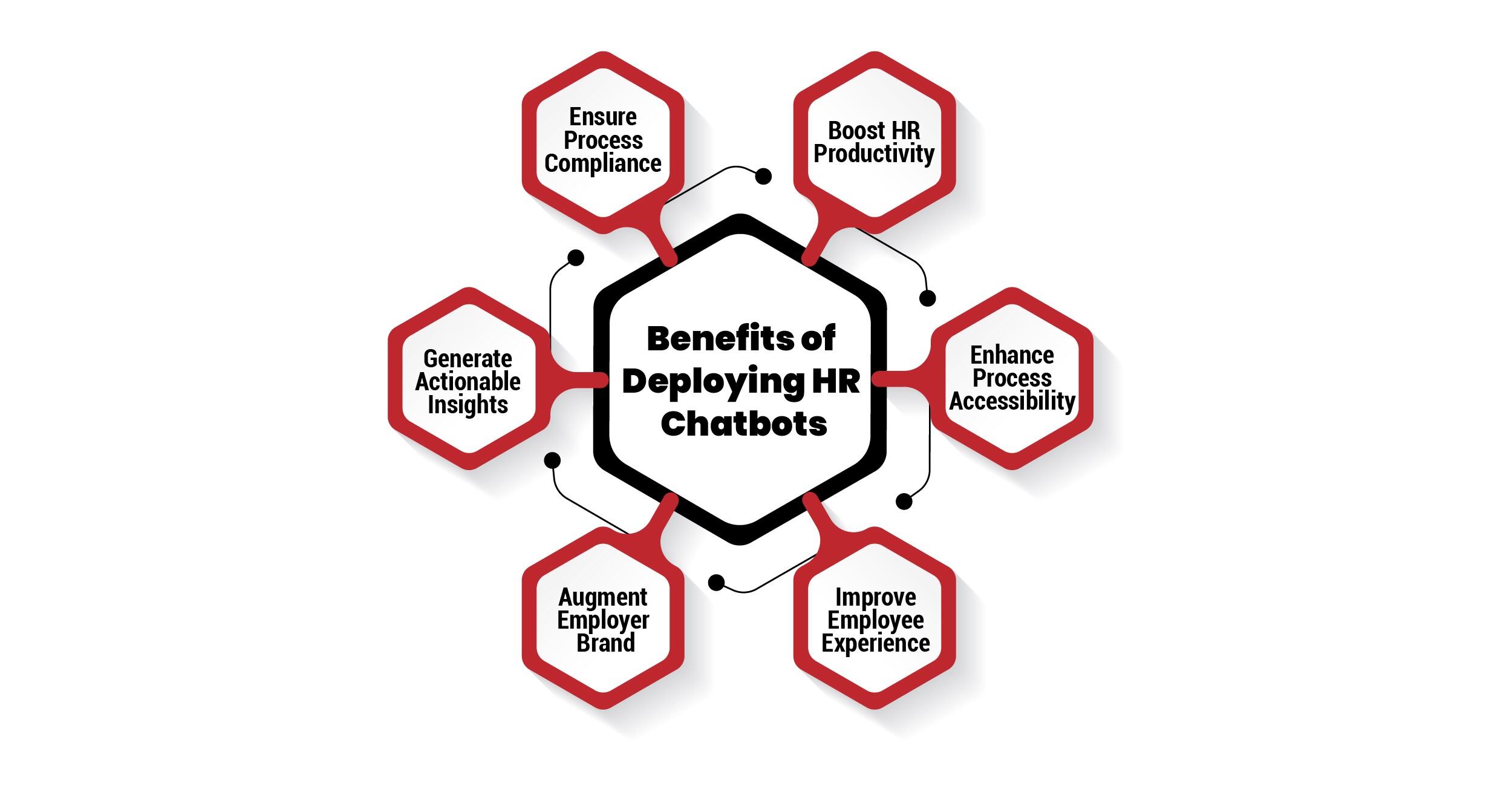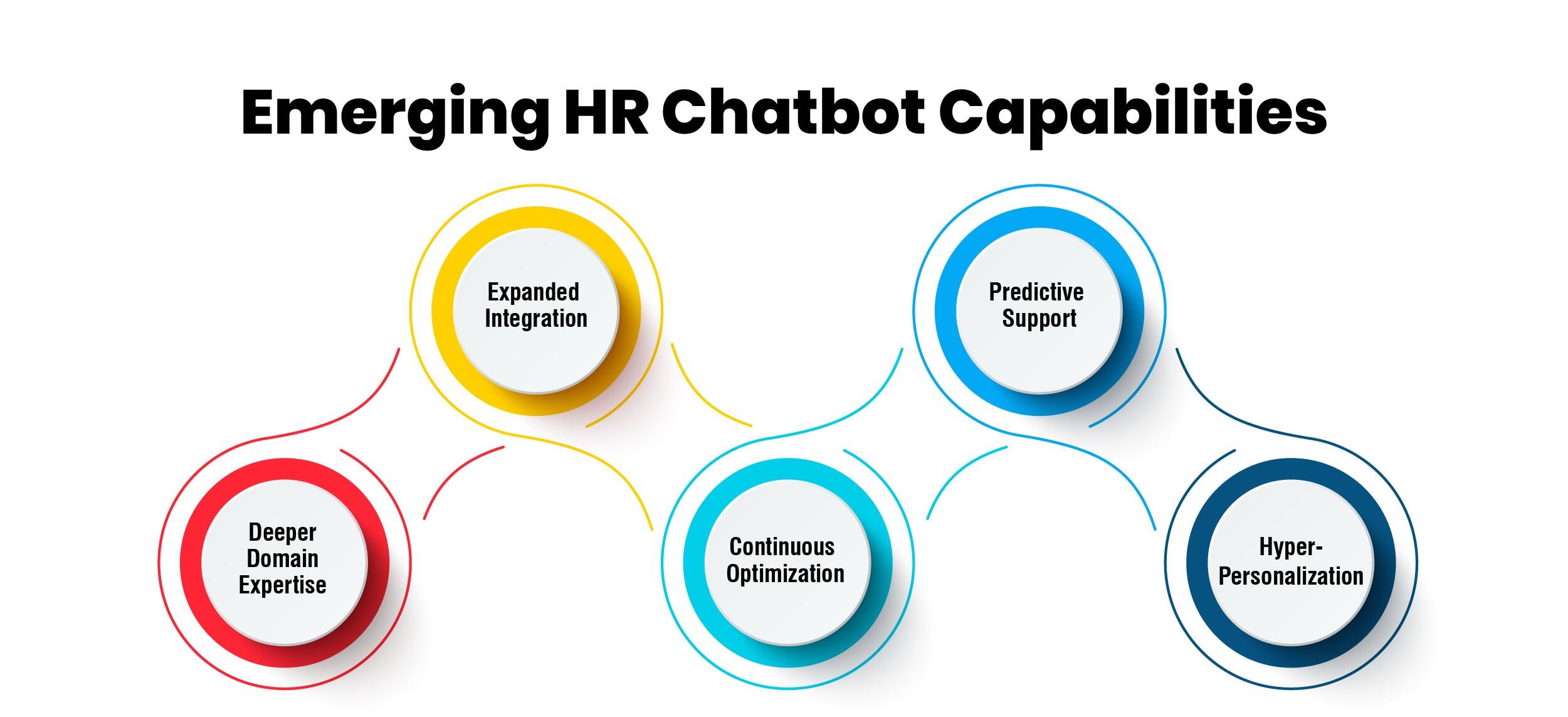Artificial intelligence is reshaping human resources, with AI-driven chatbots at the forefront of this transformation. By automating high-volume repetitive tasks, chatbots give HR teams capacity to focus on value-added responsibilities. They also enhance applicant and employee experiences via 24/7 self-service support. Furthermore, chatbots generate data-backed insights guiding enhanced workforce decisions. This blog explores the growing relevance of HR chatbots, their benefits, and use cases across HR functions.
As per PR Newswire reports, the HR chatbot market is primed for 25.7% CAGR until 2030, exceeding $3.99 billion globally on the back of surging adoption. Already, about 12% of HR departments deploy some form of AI, primarily chatbots, to manage talent. The US and China currently dominate HR AI spending. Here are some statistics on AI in HR chatbots:
According to a survey conducted by Oracle, 50% of human resources leaders reported that they have already implemented AI-powered chatbots for HR operations or have firm plans to deploy them within the next 12 months.
A study by Juniper Networks estimated that incorporating chatbots could result in over $8 billion in global cost savings per annum for businesses.
Management consulting firm Gartner predicted that around 20% of all HR-related queries would be handled by AI-driven chatbots rather than HR representatives.
According to IBM's global study of HR leaders, approximately 66% believe that the adoption of HR chatbots leads to substantial dividends when it comes to improving employee engagement levels.
The management consulting firm Deloitte's survey found that around 69% of executives globally rate the ability to deliver personalized employee experiences via channels like AI-powered HR chatbots as a very high priority.
According to Brandon Hall Group's study, around 22% of organizations surveyed are currently deploying chatbots to deliver personalized learning recommendations and training content to employees.
Key factors propelling adoption include:
Thus, chatbots are becoming integral components of HR technology stacks at leading progressive firms.
HR chatbots are AI-powered conversational agents designed for various human resources use cases. Using NLP and machine learning, they comprehend questions posed in natural language and provide accurate responses. Many can also complete routine HR tasks automatically based on voice or text interactions.
HR chatbots blend intelligent process automation with virtual assistants focused on streamlining and enhancing HR operations. With configurable no-code platforms now available, custom HR chatbots are viable for most companies without needing extensive technical skills.
Though early HR chatbots focused largely on recruitment, their expanding capabilities now span supporting the full employee lifecycle:
Such wide applications make HR chatbots versatile tools offering immense value.
Delivered thoughtfully, HR chatbots drive multifaceted dividends: 
Together, such advantages make ROI-positive investments in HR chatbots prudent for maturing enterprises to gain competitive talent advantages.
While early HR chatbots focused largely on recruitment, their expanding capabilities now cover the range of HR subdomains:
Chatbots screen applicants initially, schedule interviews, and onboard new hires seamlessly.
Intelligent assistants suggest training content, provide mentors, and chart job rotations that are aligned with growth plans.
Bots integrate goal setting, check-in reminders, peer feedback, and calibration, assisting in transparent evaluation.
Virtual agents address policy questions, coordinate perks delivery, support shift scheduling, and enable self-service payroll actions.
AI helpers administer pulse surveys, recognize achievements via peer bonuses, and foster social connections, improving retention.
Wearables track employee fatigue levels and hazardous environmental conditions while chatbots coordinate responses.
Sophisticated algorithms crunch engagement, productivity, attrition, and compensation data, aiding faster decisions.
Such expansive applications promise immense potential for enterprises boldly embracing innovative HR solutions.
However, imprudent implementation risks employee friction and wasted investment. Thoughtfully adopting HR chatbots involves:
Audit Workflows
Analyze current human-reliant processes prime for automation and isolate plans needed if chatbots fail.
Set Limited Scope
Initially, focus chatbots on addressed scaled pain points instead of attempting full-spectrum disruption to build confidence.
Co-Create Solutions
Involve staff across levels when configuring chatbots, balancing ease of use and depth of functionality.
Continuously Improve
Solicit user feedback to quickly address learning gaps and expand skills as familiarity increases.
Align KPIs
Tie operational metrics around chatbot penetration and customer satisfaction to incentives at relevant levels.
Commit Resources
Develop in-house AI talent for sustained excellence as vendor partnerships get you started.
Thus, thoughtfully framing the problem, aligning stakeholders, and iteratively advancing solutions remain vital to harnessing the full potential of HR chatbots sustainably.
While significant progress is achieved, existing HR chatbots represent nascent base functionalities with immense headroom for innovation as AI advances. 
Evolving capabilities coming online include:
Such exponential enhancements to HR chatbots promise order-of-magnitude improvements in human resources operations, employee lifetime value, and retention yields in coming years.
However, amidst tactical advantages, the long-term impact of AI-powered HR lies in elevating workforce decisions. Key priorities here include:
Tapping chatbots to uncover previously impossible insights around remote teams, gig talent, and automation intersections.
Validating innovative protocols on engagement or productivity via controlled chatbot trials soliciting feedback.
Monitoring interaction patterns to identify emergent needs across segments, avoiding delayed mass reactions.
Planning organizational responses, including those via bots for high-severity events, using advanced simulation models.
Thus, apart from tasks, HR chatbots assumed strategic promise of tremendous dividends sculpting future-ready workforces.
In summary, AI-driven HR chatbots promise tremendous potential to enhance productivity, experiences, decision-making, and value creation across critical talent processes. However, thoughtfully framing the problem context, aligning stakeholders, and iteratively advancing solutions remain vital to extracting the full potential and avoiding the risks of superficial implementations.
Those undertaking this journey holistically will gain durable advantages in attracting and unlocking human potential, conferring market leadership over rivals. Indeed, incumbent spots on future Fortune 500 lists may well hinge on such moves made today to reinvent HR via savvy AI adoption.
This website uses cookies to enhance website functionalities and improve your online experience. By browsing this website, you agree to the use of cookies as outlined in our privacy policy .